This traditional Indian spice is starting to gain popularity in the west. But, how healthy is turmeric, what exactly is it, and, of course, how high in potassium is turmeric?
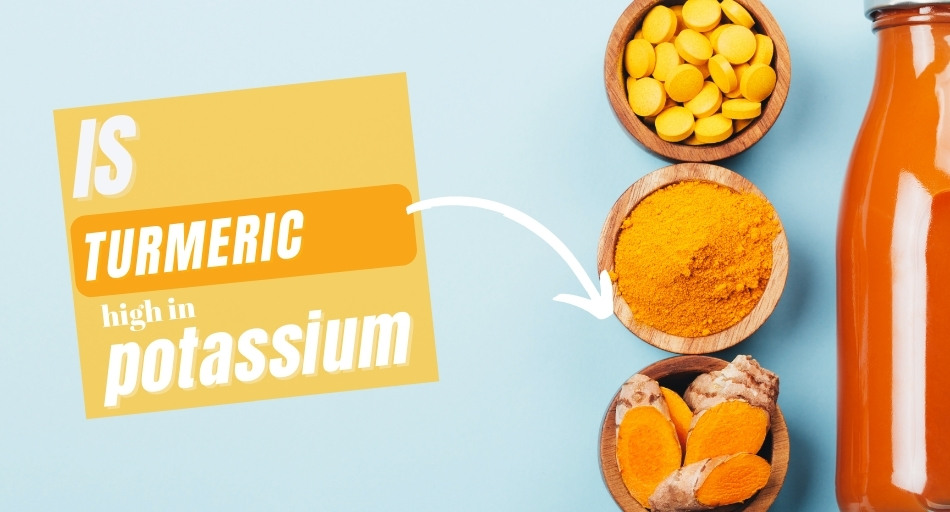
Table of Contents
- Is turmeric high in potassium?
- How much potassium is in turmeric?
- What is turmeric?
- Is turmeric good for you?
- Which has more potassium turmeric or curry powder?
- Which has more potassium turmeric or ginger powder?
- Can you take in too much potassium from turmeric?
- Can you have turmeric on a low potassium diet?
- Frequently Asked Questions
- Conclusion
Is turmeric high in potassium?
Turmeric isn't high in potassium. A teaspoon of turmeric contains only around one percent of your daily potassium needs. For that reason, turmeric isn't a good source of potassium and is safe to consume on a low-potassium diet.
Apart from small amounts of potassium, a tablespoon of turmeric has around 4% of daily iron needs as well as 2% of daily needs of fiber and other minerals and nutrients.
Can You Check Your Potassium Level at Home?
How much potassium is in turmeric?
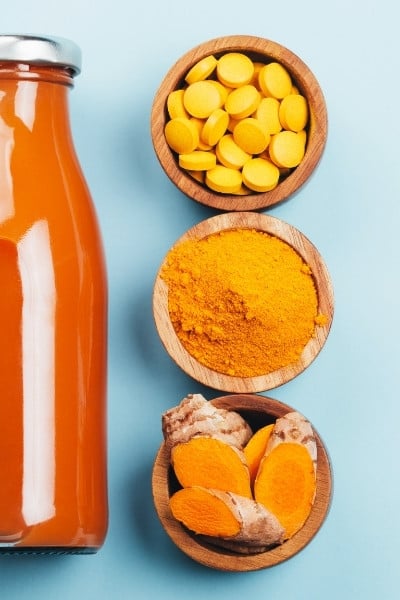
3.5 oz or 100 grams of turmeric contains a big amount of potassium - 2,525 mg or more than 50% of recommended daily intake of potassium. However, when you look at a teaspoon, then there's only 55 mg of potassium or 4% daily value.
A tablespoon contains more potassium due to it being larger than a teaspoon. There's 171 mg of potassium in a tablespoon or almost 4% of the daily value that stands at 4,700 mg per day.
What is turmeric?
Nutritional value: 3.5 oz (100 g) Turmeric Powder
- 354 Calories
- Total Fat 10 g 15%
- Saturated fat 3.1 g 15%
- Cholesterol 0 mg 0%
- Sodium 38 mg 1%
- Potassium 2525 mg 72%
- Total Carbohydrate 65 g 21%
- Dietary fiber 21 g 84%
- Sugar 3.2 g
- Protein 8 g 16%
- Vitamin C 43%
- Calcium 18%
- Iron 230%
- Vitamin D 0%
- Vitamin B6 90%
- Vitamin B12 0%
- Magnesium 48%
Turmeric is a traditional Indian spice coming from the flowering plant, Curcuma longa, of the ginger family. It has a long history and has been used for centuries in Asia as traditional medicine and dye, as well as a spice.
Is turmeric good for you?
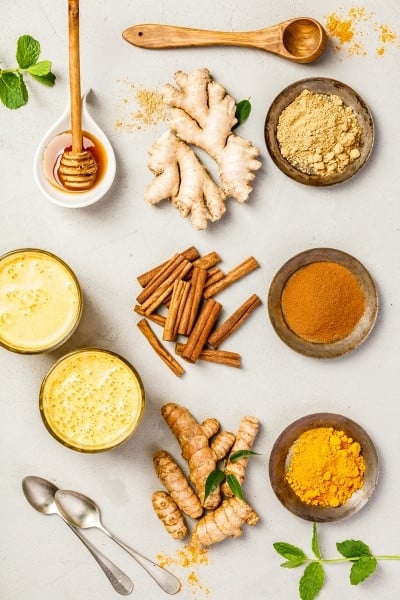
Turmeric, and especially curcumin, its most active compound, have numerous scientifically proven health benefits. Here are just a few of them.
1. Turmeric is anti-inflammatory
Curcumin in turmeric helps fight inflammation that contributes to various common health disorders. It can stifle molecules that play a big role in inflammation.
2. Turmeric has antioxidant effects
Antioxidants are beneficial because they protect our bodies from free radicals. Curcumin in turmeric can counteract free radicals and may stimulate other antioxidants already there.
3. Turmeric may help prevent cancer
Again, turmeric has many health benefits because of its active ingredient curcumin which can affect cancer growth, reduce the growth of new blood vessels in tumors, lead to the death of cancer cells, and reduce metastasis.
Which has more potassium turmeric or curry powder?
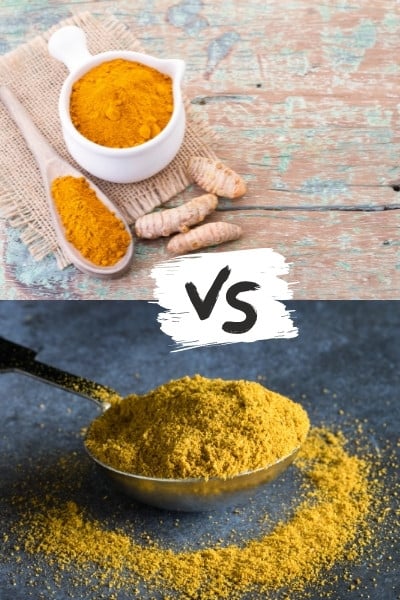
Turmeric has more potassium than curry powder. A teaspoon of turmeric contains 55 mg of potassium, while at the same time, curry powder has 31 mg.
Both of those are small amounts and constitute only around 1 percent of recommended daily potassium intake of 4,700 mg.
| 1 teaspoon | Turmeric | Curry Powder |
| Calories | 8 | 6 |
| Carbohydrates | 1.4 g | 1.2 g |
| Protein | 0.2 g | 0.3 g |
| Fat | 0.2 g | 0.3 g |
| Fiber | 0.5 g | 0.7 g |
| Potassium | 55 mg | 31 mg |
| Vitamin C (%DV) | 1% | 0% |
| Vitamin B6 (%DV) | 0% | 0% |
| Calcium (%DV) | 0% | 0% |
| Iron (%DV) | 4% | 3% |
| Magnesium (%DV) | 1% | 1% |
| Vitamin D (%DV) | 0% | 0% |
Which has more potassium turmeric or ginger powder?
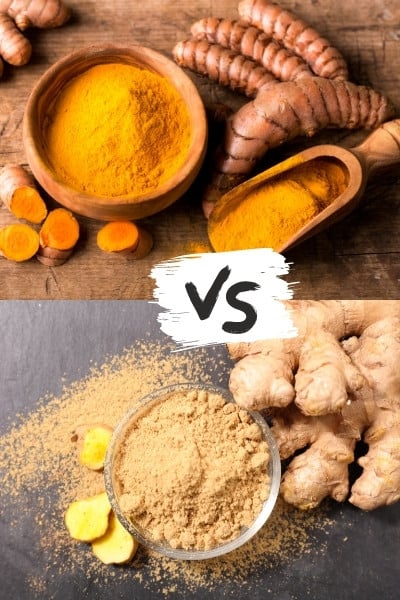
Turmeric has double the amount of potassium as ginger powder. A teaspoon of turmeric has 55 mg of potassium, while ground ginger has only 24 mg.
Neither of these two spices is an excellent source of potassium and is safe for low-potassium diet followers.
| 1 teaspoon | Turmeric | Ground Ginger |
| Calories | 8 | 6 |
| Carbohydrates | 1.4 g | 1.3 g |
| Protein | 0.2 g | 0.2 g |
| Fat | 0.2 g | 0.1 g |
| Fiber | 0.5 g | 0.3 g |
| Potassium | 55 mg | 24 mg |
| Vitamin C (%DV) | 1% | 0% |
| Vitamin B6 (%DV) | 0% | 0% |
| Calcium (%DV) | 0% | 0% |
| Iron (%DV) | 4% | 2% |
| Magnesium (%DV) | 1% | 0% |
| Vitamin D (%DV) | 0% | 0% |
Can you take in too much potassium from turmeric?
You would have to eat an outlandish amount of turmeric powder to take in too much potassium, especially on a regular basis.
A teaspoon or a tablespoon doesn't contain much potassium, but 3.5 oz or 100 grams of turmeric has more than 50% of the daily value of potassium.
However, eating a couple of ounces of turmeric a day isn't realistic, and I can't imagine someone doing it on a regular basis.
Can you have turmeric on a low potassium diet?
Turmeric is a low-potassium spice and is generally safe for people on a low-diet potassium diet. A teaspoon of turmeric contains only 55 mg of potassium which is 1.8-3 percent of the daily potassium value.
The daily recommended low-potassium diet recommendation is 2,000-3,000 mg per day.
Frequently Asked Questions
Curcumin is a major part of turmeric, and both of these powders have been shown to lower cholesterol blood sugar and reduce joint inflammation, as well as reduce the chances for tumor and bacterial and fungal growth.
The best way to take turmeric is with a liquid, for instance, as a part of a smoothie, because it takes less time for it to break down in your stomach.
Curcumin in turmeric and turmeric tea could slow changes in your brain linked to neurodegenerative diseases like Alzheimer’s disease. It has the prospect of aiding in the therapy of depression as well.
Conclusion
Although it has many health benefits due to its active ingredient curcumin, turmeric isn't high in potassium and is safe to consume on a low-potassium diet.
However, if you're looking to boost your potassium intake, you're better off looking elsewhere.
Don't know which foods are high in potassium? Read our article, 15 Best Food Sources of Potassium. We also have a guide to this important mineral: Potassium 101: All You Need To Know About Potassium.
Source: USDA
